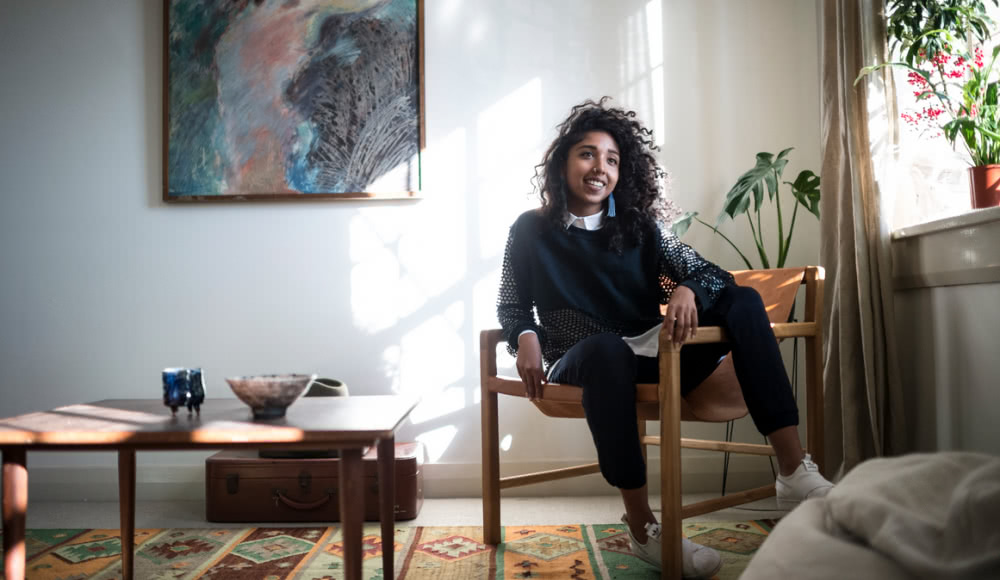Sydney’s Live/Work Spaces program is the lifeline creatives need right now

In 2013, the City of Sydney launched its creative live/work residency program, where artists are offered subsidised rent on inner-city properties that they usually would not have the means to afford. This is a huge pressure relief for artists, allowing them to focus on their work instead of the day-to-day financial and physical barriers that only cripple art.
We spoke to Marni Jackson, cultural projects manager for the City of Sydney, about the program. She was the long-standing general manager of Renew Newcastle, an innovative and brilliant scheme which brought life to Hunter Street in Newcastle through the offering of empty storefronts to creative businesses at a reduced rental rate.
How was the creative live/work residency program conceived, and what steps did it take to bring it from an idea to reality?
It was through the development of the city’s cultural policy, which was a huge process to find out what people who lived and worked in the city wanted to see happening in Sydney and what issues were preventing the cultural sector from being able to function and be successful and strive in Sydney. Lots of ideas were thrown up, discussed, researched, and then eventually developed and put into the policy and the action plan.
Around that same time, the city also recognised that there were properties that we had — specifically in the William Street [Darlinghurst] area — that were under-utilised, and matching the needs of the creative sector up with this under-utilised resource is something that was driven by the Lord Mayor at the time: to see if we could use those William Street properties to create a hub to allow creative enterprise to happen in places where the artists wouldn’t ordinarily get access to those properties.
The first of the city’s Live/Work apartments were located in this same block on the corner of Burton and William St. alongside a three-story commercial property, which used to be a luxury car dealership on the bottom level. All together those properties were conceived of as a hub and the plan was to use those properties for the things they were suitable for.
So we had one-bedroom apartments, renovated in a modest way; it’s an early 20th Century building, so there’s some original features there, but the kitchens were updated, carpets were put in and the place was painted to make them more suitable for new tenets — more inviting. Those first tenets got in around 2014 – so around the same time the Cultural Policy was being developed and published – it’s a concurrent process.
Affordable living space is something that’s in the policy: that the city will try to find those kind of affordable living opportunities for artists in the city, knowing that rent is expensive in the city and artists may need support to access property in a city with rising rental prices.
I understand you have an area in Waterloo that is also in use.
Those six apartments on William Street were the first — they’ve been operating since 2014 — and this space out of the back of Waterloo Library is actually the old caretaker’s flat; once upon a time there would have been an onsite resident worker. When we realised it was a residence – and therefore it had the facilities, it had the makeup suitable for use as a tenancy, and also being connected to a library – it makes perfect sense for a cultural tenet to have access to that space.
It’s in its first tenancy, and that will continue to be used in the foreseeable future as an artist space. So, we have seven.
What have been the biggest stumbling blocks and hassles?
I guess what we’ve done here is take advantage of existing assets that the City has. The City does have a big property portfolio, but not very many residential spaces. Using them strategically like this has been seen as valuable, but I guess that’s a challenge: we’re looking at the existing stock that the City has, and there are limits with that. There are limits to the amount of residential property that we own, and that we can make available.
What are you looking for, generally, with the selection criteria? I imagine there is a lot of demand.
There is a lot of demand. Between 40 and 50 people will apply for each place, each time we go out.
In terms of criteria, there are specifics, but generally we want to see from those artists they will benefit from the opportunity to live and work in the city centre, close to the heart of the city, and to see that having subsidised rent for a period of time will benefit them in their practice – and at this stage of their career.
Do you follow what other councils do? Have you seen examples of other councils in Australia or around the world with programs that you’d wanna emulate?
We’re undertaking a bit of bench-marking at the moment, to look at what’s happening overseas in other global cities and what kind of residential support for artists exists. There’s not many other councils in Australia with programs at all like this, in terms of the length of tenure (12 months), and the offer. So it sits alone with that.
How are the tenets held accountable in terms of the art that produce within that calendar year? Is it like a music grant where you have to have a completed product or are the goals more nebulous?
They undertake a creative agreement that’s really based on their own goals for themselves. Through the application process, they’re letting us know what they’re mean to be doing over the set period of time: where their career is going, and outlining what they are wanting to achieve.
We don’t have a specific project outcome. We’re not asking them to produce a certain thing or the same thing as anyone else, we’re more asking them to meet the goals they’ve stated for their own practice and their own career development and they’re the things we check in on.
We have a creative tenancy management service provider – that’s someone from outside of council, someone from the arts community, who works with the tenants who develop that agreement. To agree, say, they are working towards an exhibition, or a series of works, or writing for a new album — whatever it is — and we will have some milestones or some check points just to see they are keeping on doing the things they are doing. So we know they are still on track to achieve the things they want to achieve.
Find out more about the program here.
This article originally appeared on The Industry Observer, which is now part of The Music Network.


































